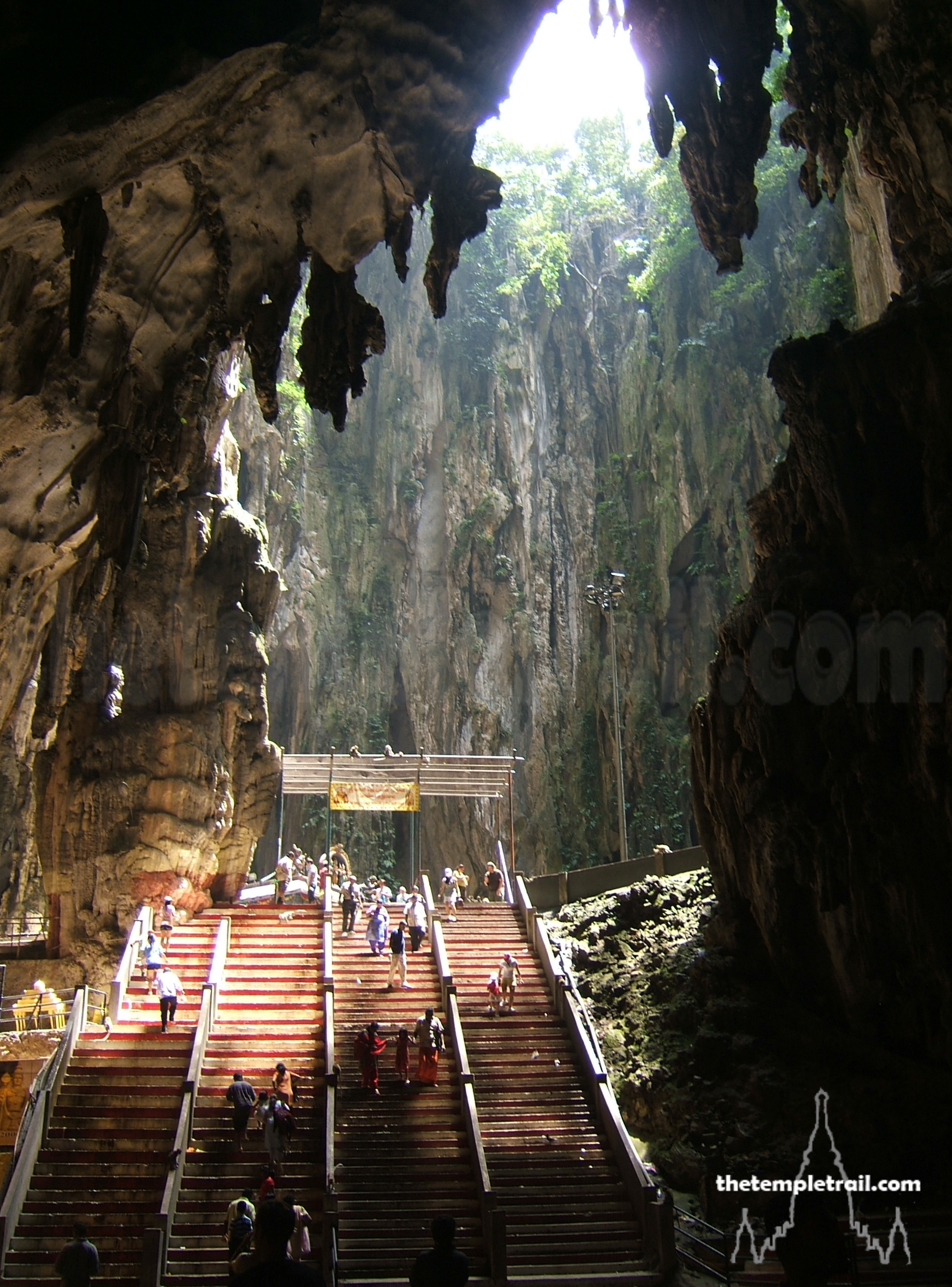The tuk-tuk bounces along the dusty road and through jungle. The motorbike that has taken the place of a horse in pulling your carriage putters and splutters after its recent refill of two-stroke from the roadside vendor who sells the stuff in old cola bottles. The thick foliage gives way to an open space as you pull in to a dusty clearing and a horde of grubby Cambodian children descends upon you. The refrain you have heard a hundred times since you arrived in Siem Reap echoes in your ears – ‘OK, you buy, three for a dollar’. As you banter with the children, you slowly push on to the site you have come to visit. It is a pure beauty. Surrounded by the typical moat, Banteay Srei is one of the most ornately decorated temples in what was once the kingdom of Angkor.
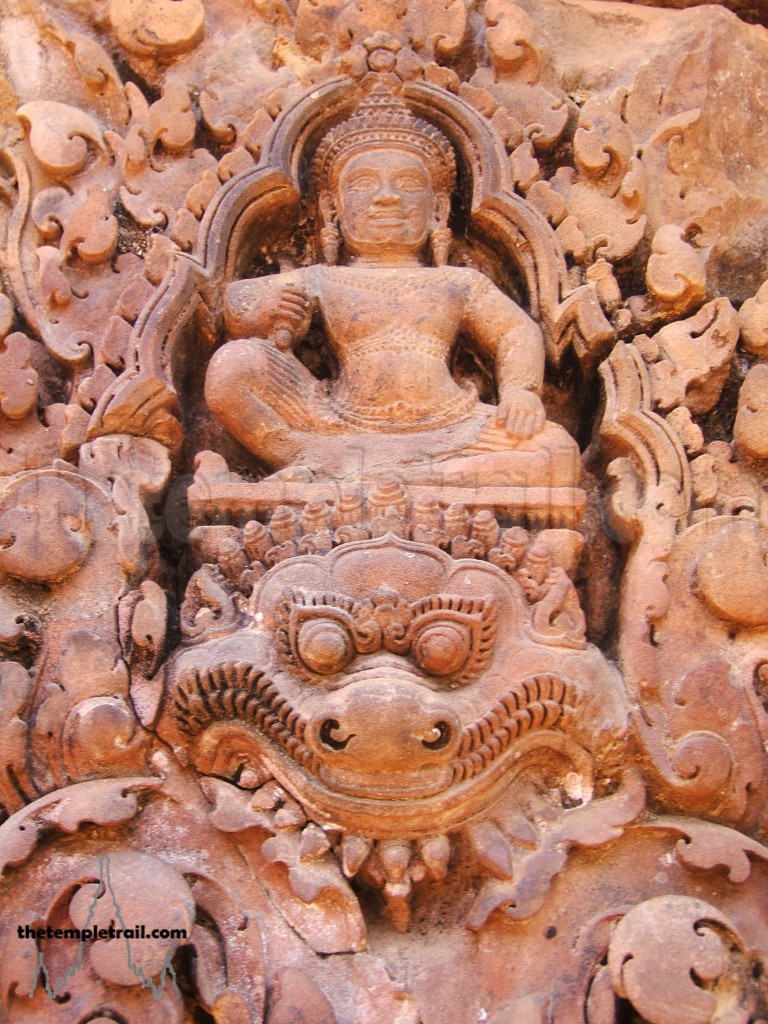
Banteay Srei (Citadel of Women) is named after the carvings of the apsaras (dancing nymphs) and devatas (minor goddesses) that adorn the buildings, but this is a modern name. It was originally called Tribhuvanamahesvara (Great Lord of the Threefold World) and was dedicated to both Śiva (Shiva) and Viṣṇu (Vishnu). Built in the mid-10th century AD by a counsellor to King Jayavarman V called Yajñavarāha, it is the only significant temple at Angkor not built by a king. The incredibly beautiful pink sandstone temple was expanded in the 11th century and remained in use until the 14th century.
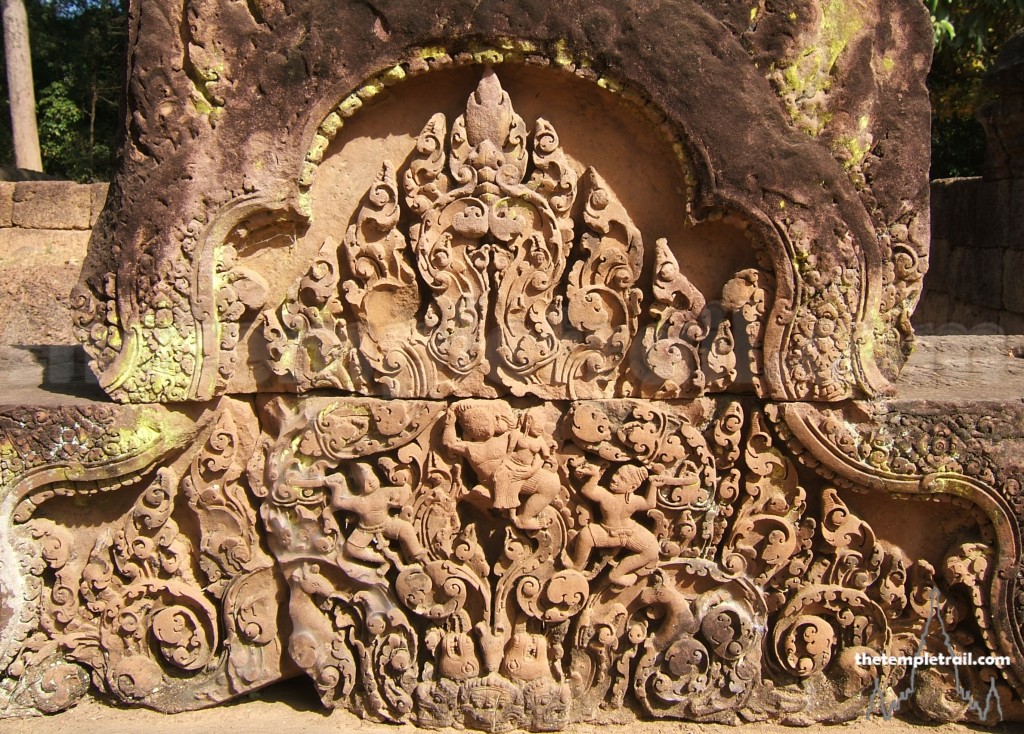
Approaching from the east and entering the causeway though the outer gopura (gateway tower) with its carving of the god Indra atop his elephant, you start to walk through what would once have been the small town of Isvapura. Isvapura originally surrounded the temple and the gopura is all that is left of its wall. As you pass through the second gopura, you step into the temple grounds. The gopuras pediment lies on the ground, but you would once have passed under the depiction of a demon abducting Sītā from the epic Ramayana story. In front of you, encircled by a moat, is the inner temple. From this end of the causeway, you see the highly ornate galleries and the tops of the prangs (tower spires) of the central sanctuary. Crossing the moat, you walk into the holy inner temple and through another gopura, this time you pass under the duelling monkey princes, Vali and Sugriva. Long galleries encircle the island in the middle of the moat and passing through the remains of the final inner wall, through yet another gopura, you are finally inside.
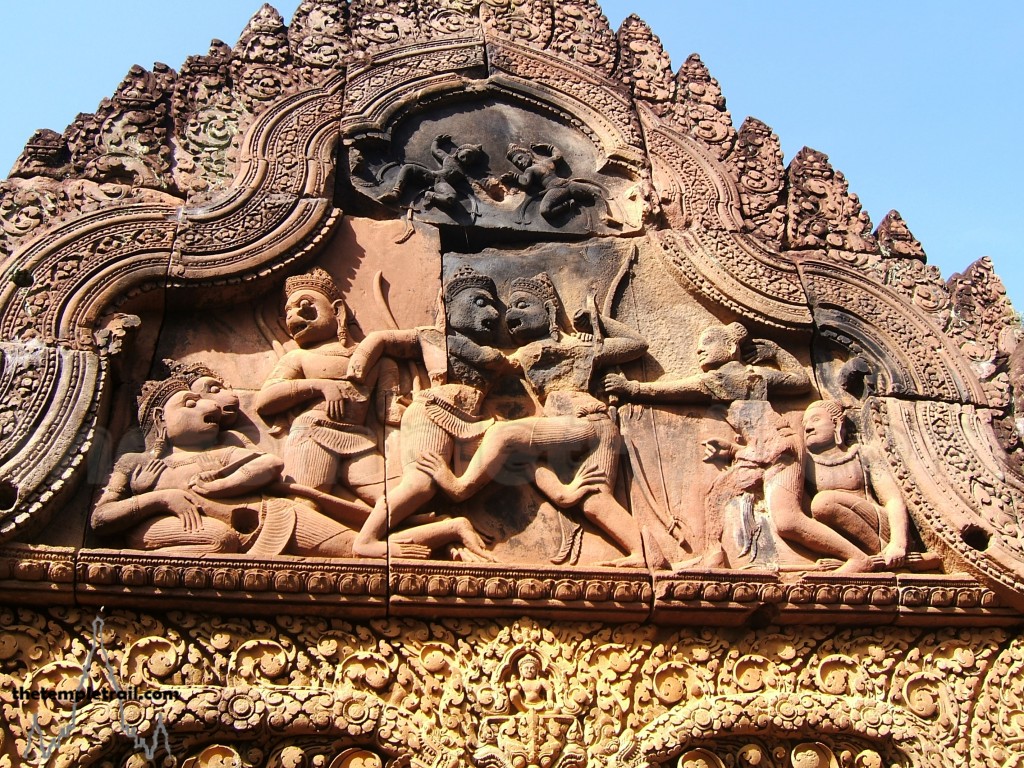
As is common with many Khmer temples of Angkor, the first two buildings are the library buildings on both the left and right of the entrance. These two buildings were repositories for holy scriptures and are covered with intricate carvings. Spectacular Nāgas (many-headed snakes), depictions of Garuda (bird man) and Narasimha (man-lion avatar of Viṣṇu) look down on you from their perches all over the buildings. The libraries have unbelievably beautiful tympana (decorative panels over doorways) adorning their façades. You notice that the libraries have false doors (also known as spirit doors) on this side. The workmanship on the buildings originally led archaeologists to believe that it was a much later temple. When they discovered the foundation stone, they were very surprised. The technique used is called sandalwood carving and the Indian influence appears to be very strong in this temple.
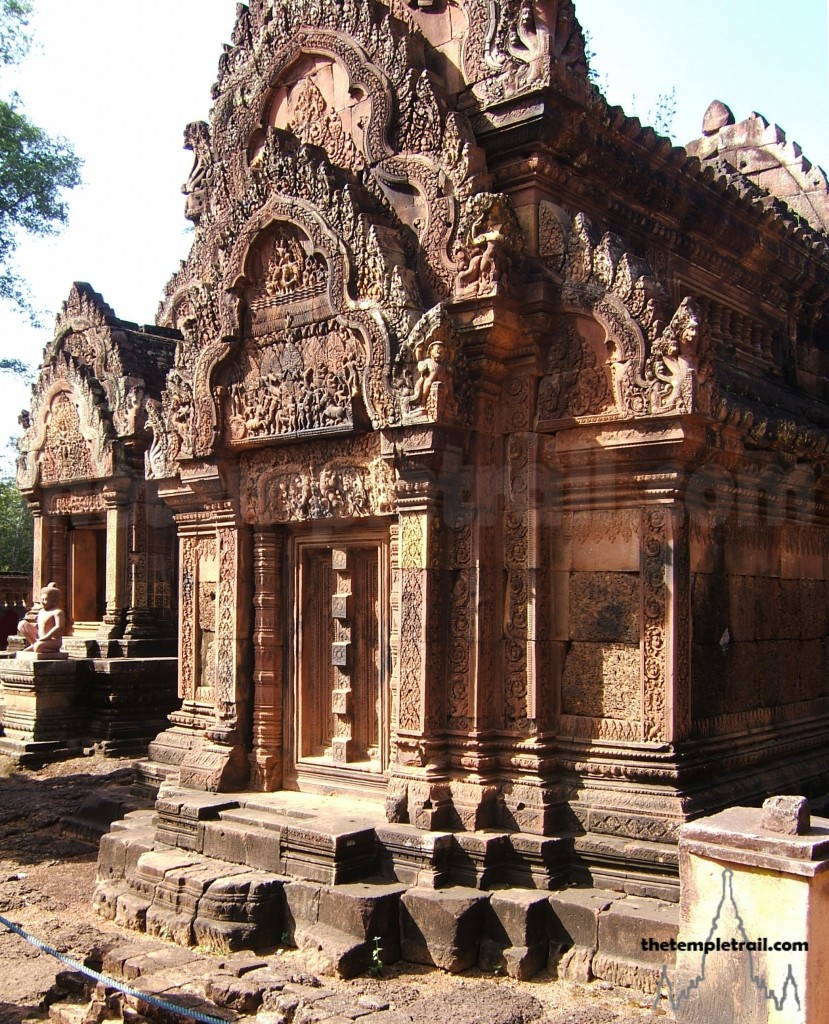
The oversized tympana allowed whole scenes to be carved onto them, so the story-telling ability of the site is extraordinary. On the east-facing tympanum of the southern library is a beautifully carved scene of Śiva and his consort Uma in an embrace on top of Śiva’s abode; Mount Kailasa. The mountain is three-tiered and each tier contains different beings. Just below Śiva sit bearded ascetics, under them are animal-headed creatures and finally at the bottom are animals. In the middle of the bottom tier is the demon-king Rāvaṇa. He is shaking the mountain as the animals flee and the other inhabitants discuss what to do. Eventually Śiva trapped him under the mountain. The northern library’s tympanum shows the god Indra extinguishing a fire created by the god Agni by creating rain.
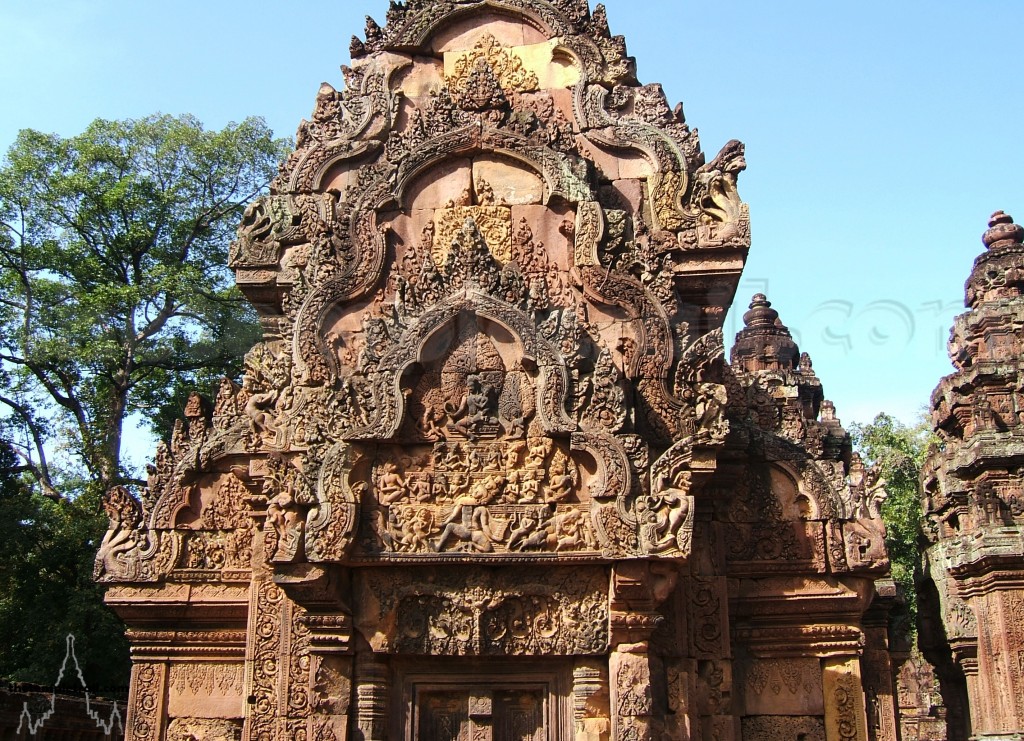
Standing between the two libraries, you are directly in front of the mandapa (entrance porch) of the central tower. This area is now out of bounds to visitors, but if you walked through the short corridor of the mandapa and under its corbelled roof, you would be in the central tower of three with their distinctly Khmer prangs. Instead you content yourself with walking around the forbidden central enclosure and looking inwards. The sanctuary would only have been open to the Angkorian elite and it retains its exclusivity to this day, as only a chosen few can enter for the purpose of maintenance. The towers are only accessible from the front and inside the ancient nobles of Angkor would have worshipped the Śiva linga (phallic symbol of Śiva).
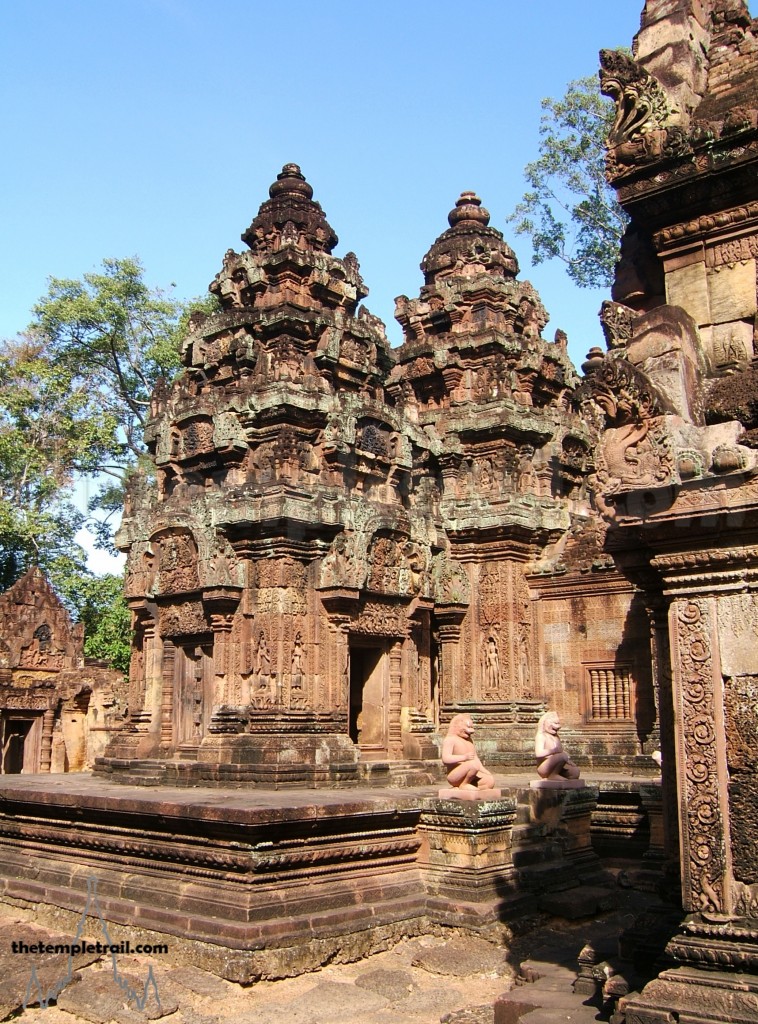
As you walk around, you are scrutinously watched by armed dvarapalas (temple guardians) carved into the niches of the elaborately scrolled towers and by lion, bird and monkey-headed guardian statues that stand firm all around the sacred enclosure. The statues are not originals (the originals are in museums or illegal private collections), but they have steadfastly taken on the second watch from their forbears who stood guard for hundreds of years.
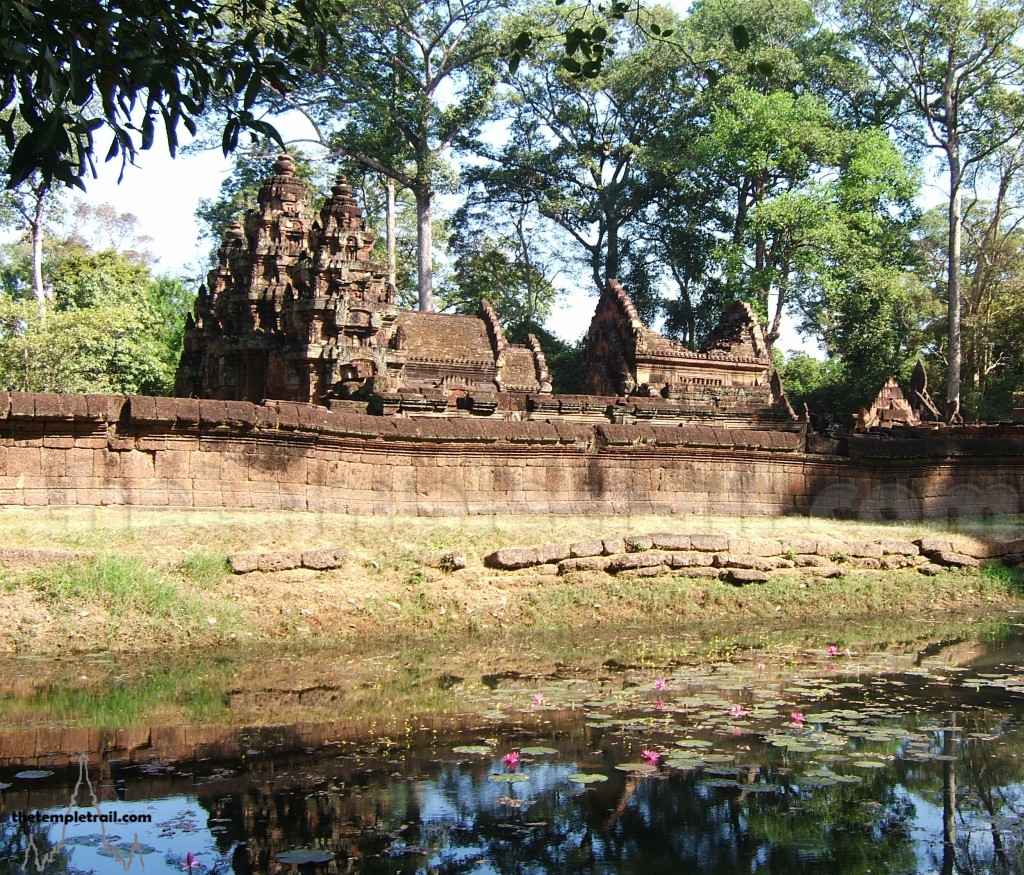
You exit the central prasat (temple) past the false spirit doors of the towers and out through the western gopuras to the outside of the moat. Walking around the perimeter and the laterite wall that encircles the intricately carved buildings, it is easy to be transported away to a magical realm. Surrounded by thick jungle, you are contained in a mythical bubble filled with gods and demons, nymphs and guardians. You have stumbled into their realm; a clearing in the forest where their dancing and frolicking will continue long past your own time on this earth. This place is theirs and you have been privileged to share it with them for a time before heading back into the crowd of hawkers that wake you from your dream with their familiar sales pitch. You have arrived back to reality.
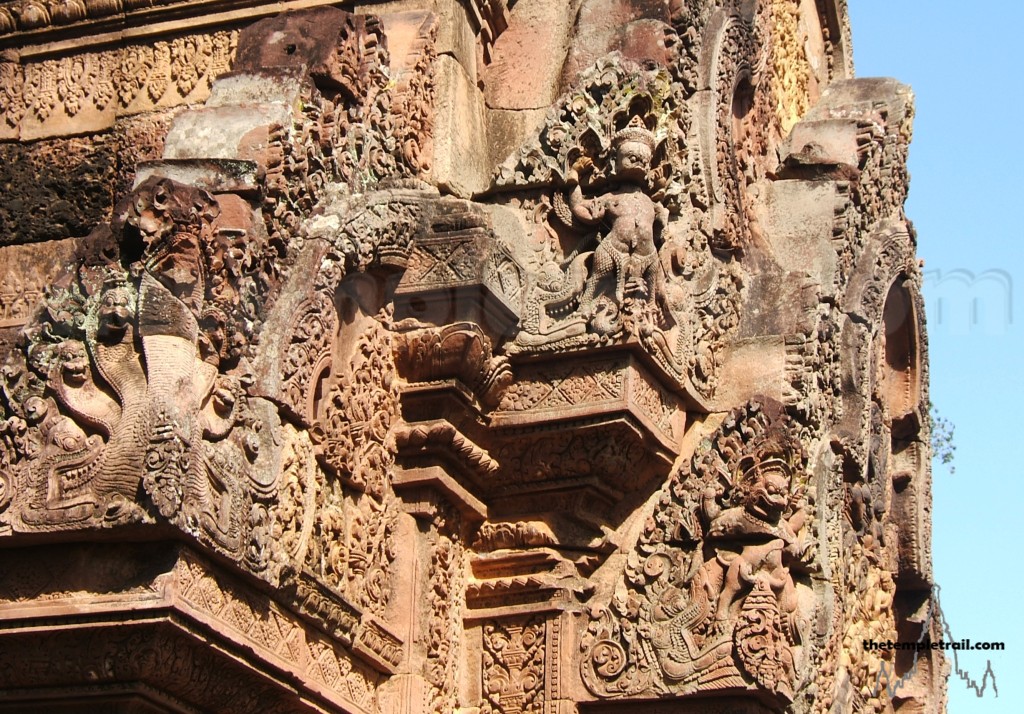
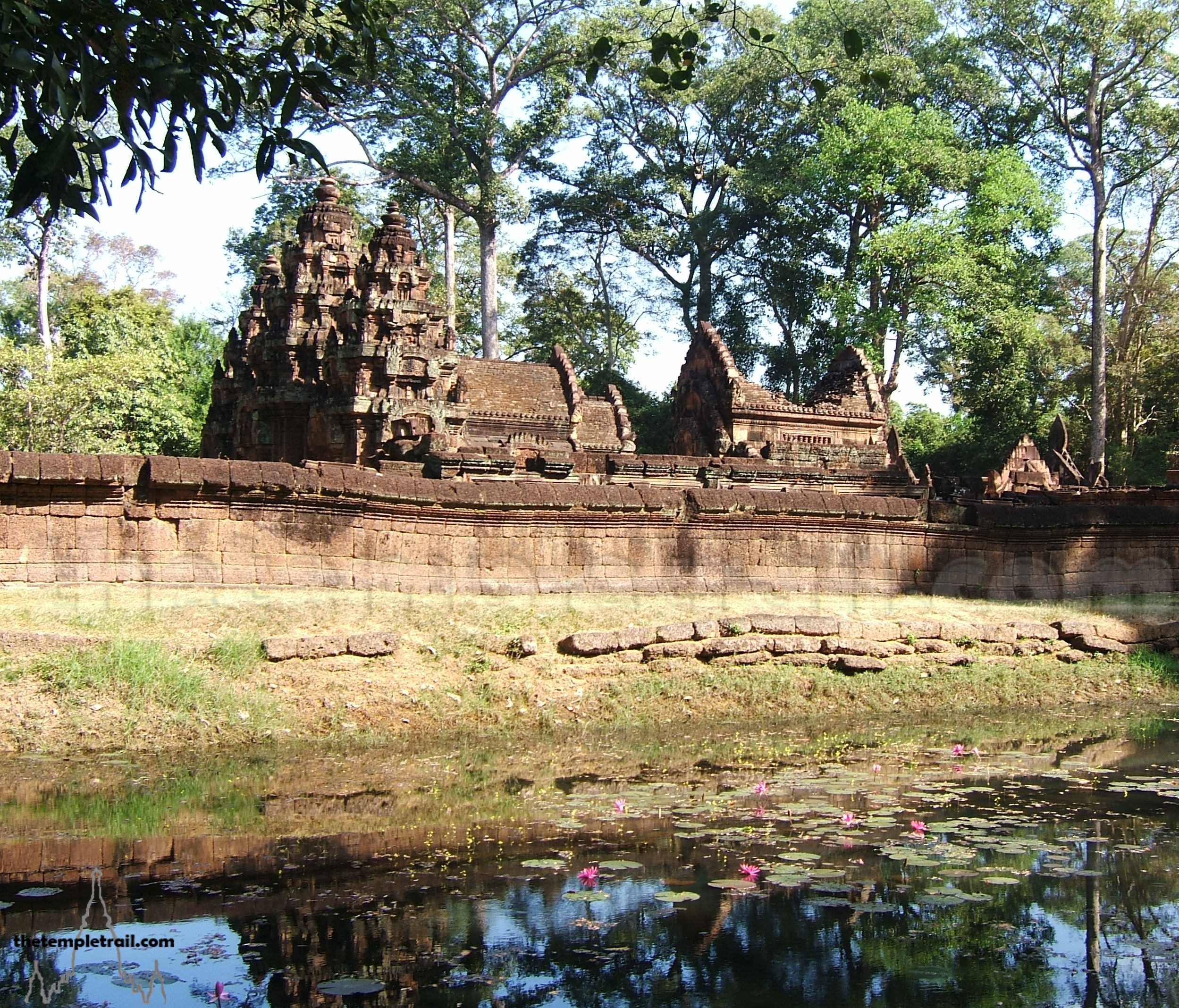
 Isla del Sol
Isla del Sol